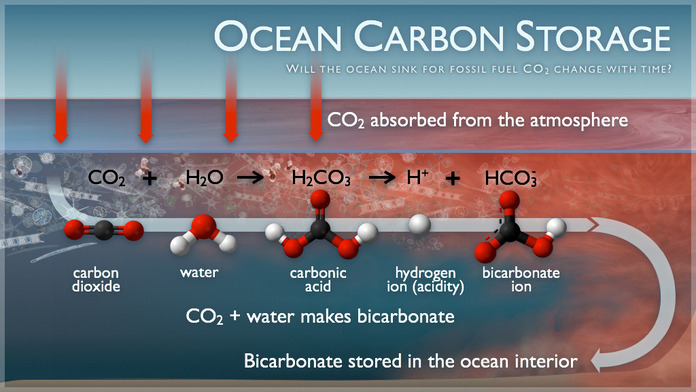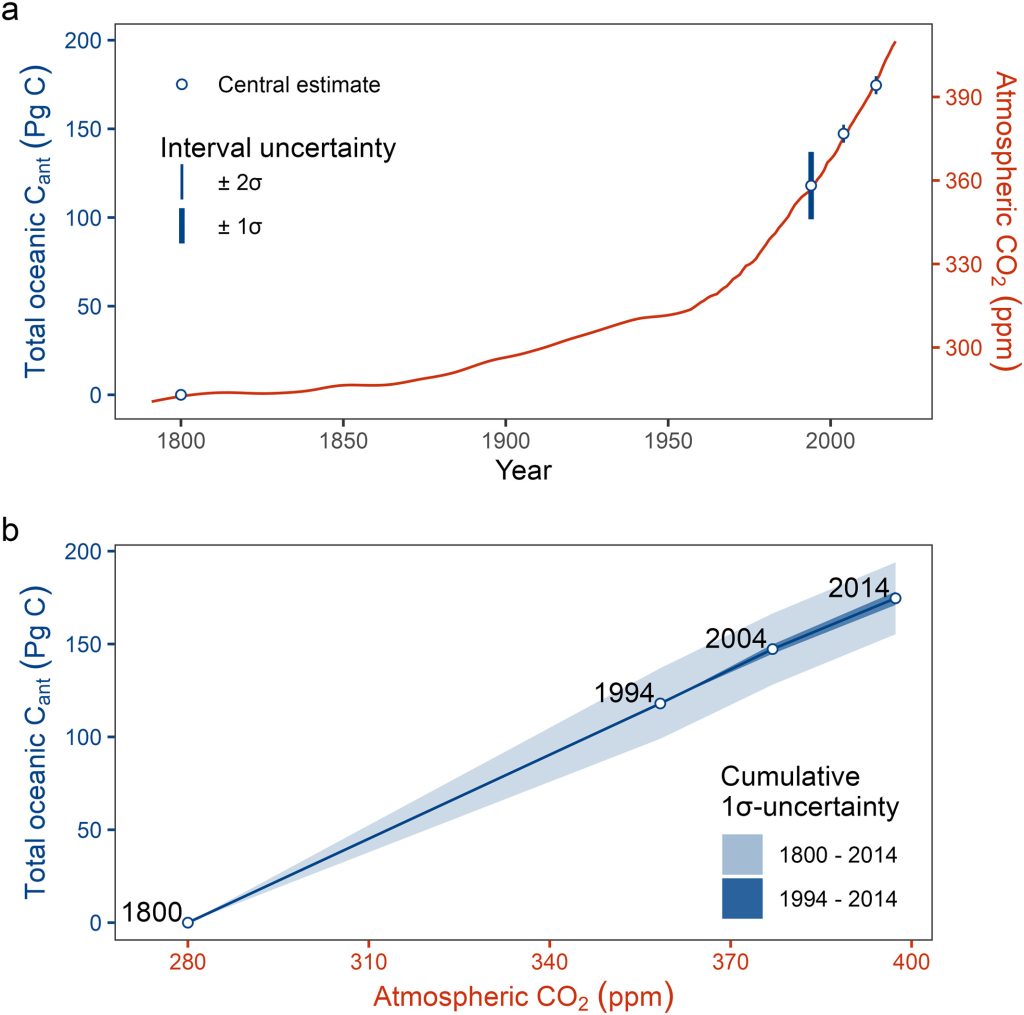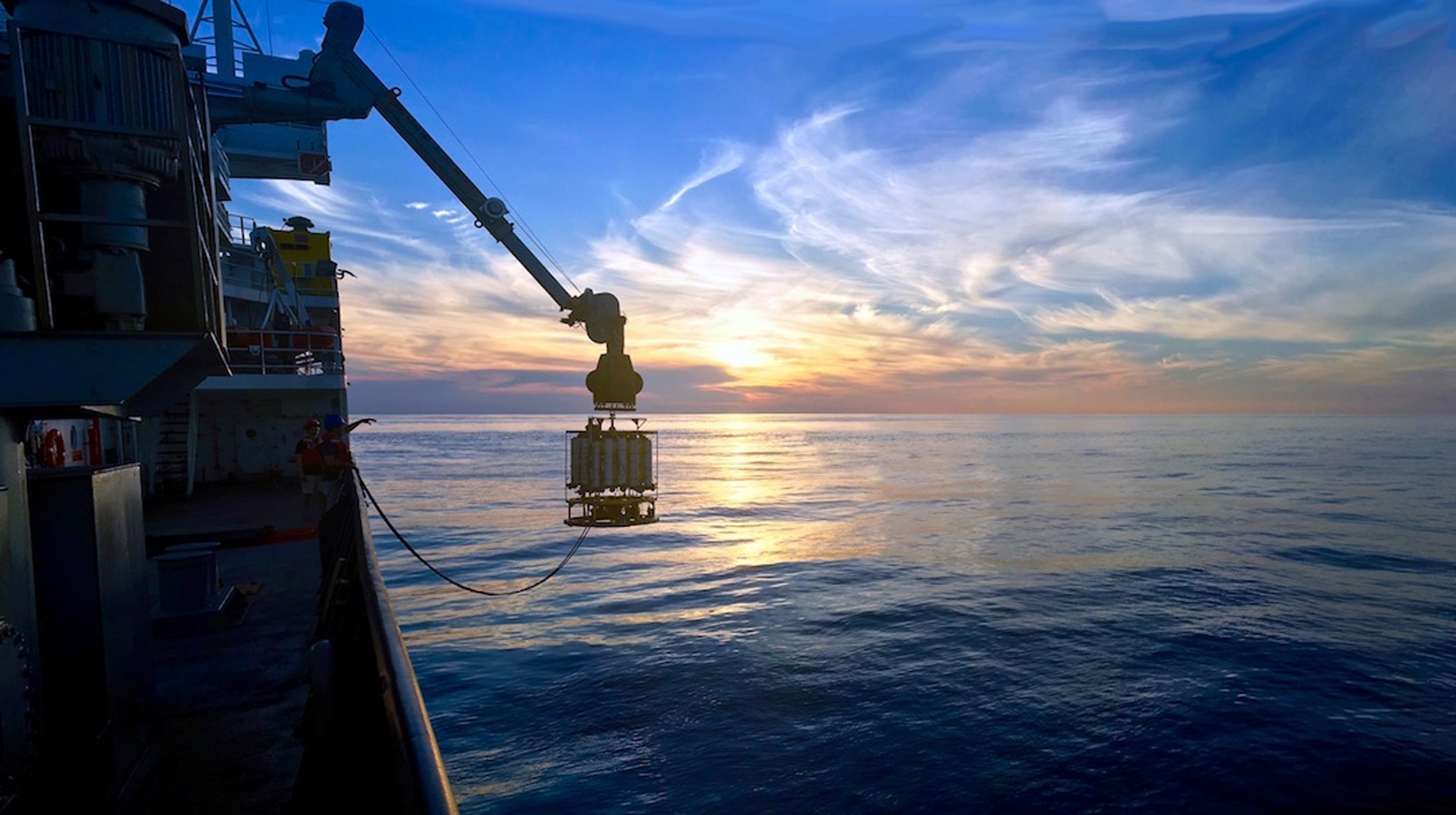A landmark study published last week demonstrates that the ocean’s role as a carbon sink and its ability to store anthropogenic, or human-caused, carbon may be weakening. A collaboration among international researchers led by Jens Daniel Müller, Ph.D. (ETH Zurich), this study captures a snapshot of three decades of global interior ocean measurements to determine the change in ocean storage of carbon emitted due to human activity and what it suggests about the future under a changing climate.

“We will not achieve the desired outcome of decreasing emissions if we don’t account for the natural sinks,” explained Rik Wanninkhof, Ph.D., an author on the paper and an AOML scientist leading the Ocean Carbon Cycle Group. “As we work towards achieving net zero emissions, we are expecting natural sinks to behave the way they have in the past… and if they don’t, we’ll have to decrease our emissions even more than expected.”
Global ocean accumulation of anthropogenic carbon, referring to carbon emitted due to human activity, has increased proportionately with human emissions since the beginning of the industrial period (~1800), thus one could expect it to continue increasing over the 20-year study period with emissions. From 1994 to 2004, global ocean storage of anthropogenic carbon increased by an estimated 29 billion metric tons (denoted in the study as Petagrams, Pg C) of carbon. However, from 2004 to 2014, the global ocean storage of carbon dioxide increased only by 27 billion metric tons.

Identifying these rates at which the ocean accumulated anthropogenic carbon allowed the scientists to calculate what is known as the “global sensitivity” of ocean carbon uptake to the growth in atmospheric CO2. Over the 20-year period, the study finds a 15% decrease in global sensitivity as atmospheric carbon emissions increased, indicating the weakening of the ocean carbon sink for anthropogenic carbon.
The authors suggest the reason for this weakening may be two-fold, attributing roughly half to the ocean buffer capacity decreasing. Following a fundamental principle of chemistry, the ocean reaches a point at which it has accumulated substantial amounts of CO2 and begins to take up less additional CO2 (i.e. anthropogenic carbon) for a given increase in atmospheric CO2. The recent reduction of the “global sensitivity” determined in this study could be a first indication that the ocean will accumulate anthropogenic carbon at a reduced rate in the future, leading to more carbon in the atmosphere exacerbating climate change.
The second half of this weakening is attributed to changes in global ocean circulation leading to decreased transport of carbon from surface waters to the global interior ocean where it can be stored on the timescale of centuries. Specifically, a decrease in the sensitivity of the North Atlantic to act as a carbon sink is observed over the two decades and possibly due to the observed weakening of the Atlantic Meridional Overturning Circulation (AMOC), though uncertainty remains whether this weakening of the AMOC is due to natural fluctuation.
Wanninkhof, along with Brendan Carter, Ph.D. and Richard Feely, Ph.D. of NOAA’s Pacific Marine Environmental Laboratory (PMEL), analyzed global ocean carbon measurement data obtained by the international Global Ocean Ship-based Hydrographic Investigations Program (GO-SHIP) that were integral to the study. GO-SHIP conducts oceanographic surveys collecting repeated measurements of dissolved inorganic carbon along designated transects around the globe every 10 years, allowing scientists to estimate the change in the ocean’s uptake of carbon from the atmosphere on a decadal scale. From there, a variety of parameters are measured to “tease out” ocean storage of anthropogenic carbon from the natural carbon cycle and biological influences, essentially quantifying a single, critical number derived from an international collaboration of scientists from a dozen nations and decades of ocean measurements.
Ultimately, this study raises concerns with some of the first potential evidence of a diminishing ocean carbon sink as climate change persists. However, above all, it demonstrates that understanding the extent to which the ocean is able to absorb anthropogenic carbon is crucial to counteracting the effects of climate change as we aim to reduce emissions.
_______________________
Acknowledgements: This research was an international collaboration led by Jens D. Müller, Ph.D. and Nicolas P. Gruber, Ph.D. of ETH Zurich. Contributing research and academic institutions also include the University of Washington’s Cooperative Institute for Climate, Ocean and Ecosystem Studies, NOAA’s Pacific Marine Environmental Laboratory (PMEL), the NOAA Global Ocean Monitoring and Observing Program (GOMO), Japan Meteorological Agency, GEOMAR Helmholtz Centre for Ocean Research, NORCE Norwegian Research Center, Japan Agency for Marine-Earth Science and Technology, the University of Bergen and Bjerknes Centre for Climate Research, Instituto de Investigaciones Marinas (IIM) of Spain, Stanford University, University of Hawaii at Manoa, and NOAA Atlantic Oceanographic and Meteorological Laboratory (AOML).
Müller, J. D., Gruber, N., Carter, B., Feely, R., Ishii, M., Lange, N., et al. (2023). Decadal trends in the oceanic storage of anthropogenic carbon from 1994 to 2014. AGU Advances, 4, e2023AV000875. https://doi.org/10.1029/2023AV000875
